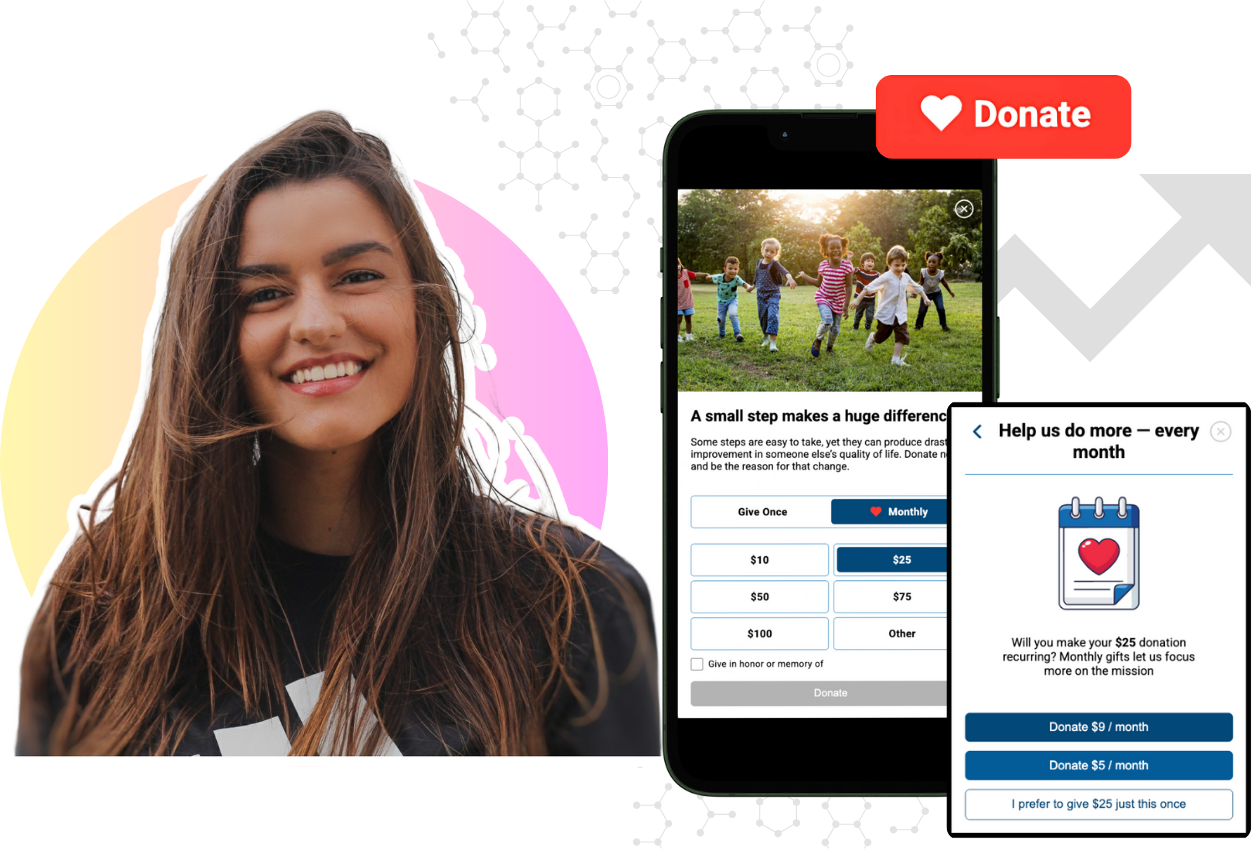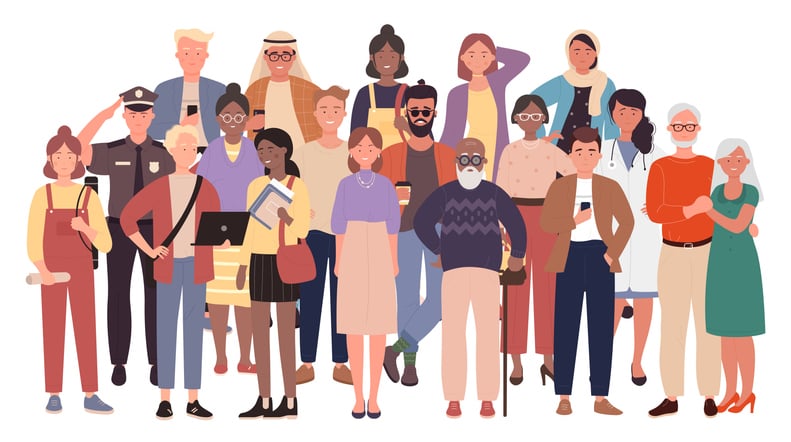Meet Donors Where They Want to Give: Online
Most people are generous by nature.

Mobile-First Pop-Up Donation Form
Launch mobile-first pop-up forms in minutes, use built-in tools to capture more donations, and optimize the giving experience—no dev team required.
New to online donation pages for your nonprofit? Start here.
Donation page A/B testing - no science degree needed.
Keep your donation page loading fast - and drive higher conversions.

The 4 Types of Online Donation Experiences
89% of donors leave without giving. Learn how to use the right donation form to close the gap and boost conversions.

Why do your donors give?
It probably seems like a rhetorical, maybe even an absurd, question. But do you know? Forget what you know about your internal mission statements, marketing spend, email campaigns, social media presence — even your frictionless giving form deployed on your amazing website. Why do your donors give to you? What makes them click the “give now” button?
In my world as a product leader, we spend lots of time, effort, and money trying to define what drives behavior and what problems we can solve with advanced technology. There are tools like Google Analytics, tag managers, heat maps, constituent mapping, data process diagrams, and countless other things that we rely on to tell us what users think, feel, and need.
In your world, you might use some of the same tools in the noble attempt to understand what makes a difference when it comes to conversion.
Recently, the folks here at iDonate gathered a group of clients for two days and listened to what they’re striving for, what they need, and what kinds of things help and hinder them. Our time together was valuable beyond measure, especially for understanding the real world needs of our users and for clarifying the importance of what we offer from a product perspective. I’ll tell you a secret — those conversations ALWAYS tell us more than the fancy tools.
I believe that those same types of conversations hold great value for nonprofits as well. What is it about your cause, your mission, your story, or your relationships that triggers your donors to engage with their dollars? Have you asked them? (And by that, I mean, have you actually had a direct conversation with your donors and asked them?)
We (humans) are really good at biases. One of the most dangerous for our purposes is confirmation bias. A lot of times, this shows up in what or how we ask a question. For example, if you asked a donor with a long history of giving to your organization, “do you believe in our mission?” They would of course say, “yes.” But is that why they give?
We have to make sure we’re asking the right questions. The right questions are almost never yes/no questions. The right questions have answers that have the possibility/probability to surprise us, challenge our hypothesis, and hopefully spur more questions. The goal of your question asking is to learn — so what value is asking questions you already know the answer to?
Maybe more insightful question(s) might be:
Remember those biases? We fall into them in other ways as well. Just like asking questions you know the answer to is valueless, so is asking people who think just like you. Avoid the echo chamber of people who will tell you what you expect and what you want to hear.
There’s a great story from WWII of allied forces looking at damaged areas on bombers returning from missions and suggesting that greater armor was needed in those areas most hit. Mathematician Abraham Wald had a different idea. Using his work in “survivorship bias,” Wald pointed out that the designers shouldn’t be looking at the aircraft that survived. Instead, they should be evaluating the bombers that didn’t make it back.
Likewise, just asking our board members and established donors we have relationships with might seem safe/easy. But to find the answers we truly need, we should also be looking to people who don’t successfully engage with our organizations.
What’s the danger in talking to a lapsed or non-converted donor? They have already decided not to give money to your cause. Ask them why! Learn from them, and at the end of your conversation find a way to make it worth their time, because more than likely it will have been worth your time.
When you’re having these conversations, inevitably you will get feedback or answers that you know the solution for. Maybe a donor tells you they couldn’t submit a donation for a specific program they are passionate about, and you KNOW they can, because you designed it that way. You MUST resist the urge to solve their problem. Your goal here is to gain as much information as you can to solve problems for ALL donors — NOT solve the problem of one donor.
The fact that your donor got lost in the process should be the information you dive into. Ask more questions like, “How did you get to the form?” “What were you expecting the process to be like?” “What did you do when you had that problem?”
Ask every question you can think of to uncover any little last nugget of mindset, experience, expectations, and the exact problem. After all of that, if you must, let someone else follow up with the solution to their problem.
 Read More
Read More

We all know the importance (and difficulty) of connecting with younger donors, but there might be some very simple things your organization can do to...

Every generation of people has a story. Each age group has lived through many different and same events. Whatever those are, they all come away with...